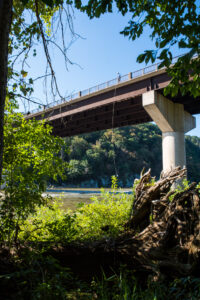The U.S. Army Corps of Engineers operates Washington Aqueduct and provides drinking water to the Washington, D.C. area. Washington Aqueduct routinely samples its source of water, the Potomac River. Each year, it reports the monthly averages for basic water parameters and several pollutants and metals. Reports since 2001 are available online. Reports from 1905 to 2000, however, had limited distribution and their legibility has faded over time.
Dr. Norbert A. Jaworski recognized the historical value of these reports. To prevent their loss, he digitized the monthly values for several parameters. The Interstate Commission on the Potomac River Basin (ICPRB) later updated his dataset through 2019 and checked the entered data for accuracy. This report focuses on changes in temperature, hardness, pH, total solids, chloride, nitrate, and sulfate over the 80 years since ICPRB was formed in 1940. Visual representations (“heatmaps”) and trend analysis show significant increasing trends in all these parameters except nitrate. The report is intended to introduce the historical Washington Aqueduct water quality data to a broader audience and highlight their potential value to Potomac studies.
The Supplemental Materials document contains additional graphical representations of the data.
See the video summary of the report:

